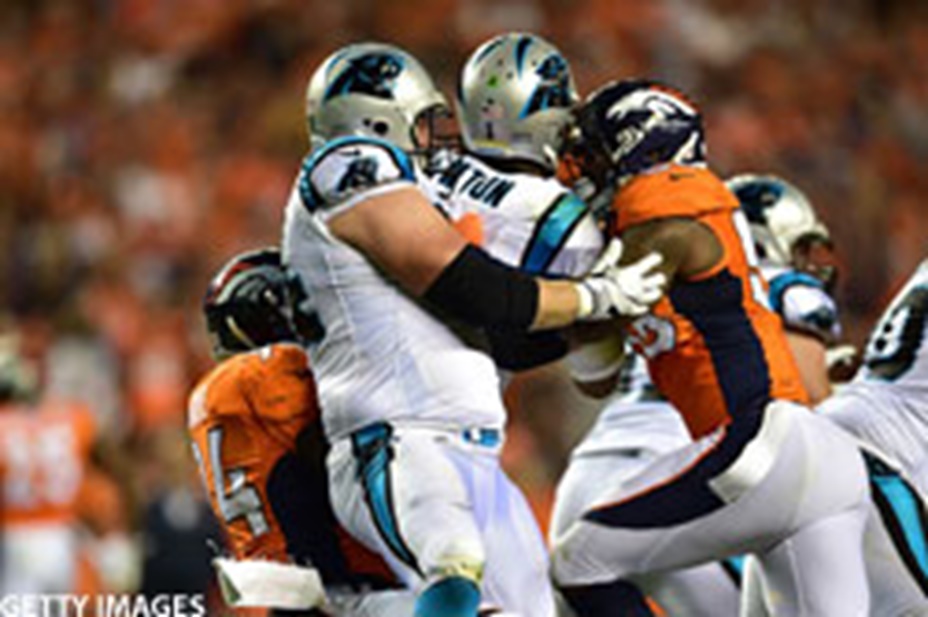Researchers who studied the brains of 202 dead football players yesterday "published the most detailed portrait to date of the devastation wrought" by CTE, which they hope "removes any final doubts of the severity and long-lasting damage" caused by repeated blows to the head, according to a front-page piece by Felice Freyer of the BOSTON GLOBE. Among 111 former NFLers whose brains were donated for the study, "all but one was found to have the disease." Researchers from the Boston Univ. School of Medicine and the VA Boston Healthcare System "documented the troubling behavior, disturbed moods, and impaired thinking" in those who had CTE. Difficulties were "found even in some high school players," though "college, semi-professional, and professional players had the most severe cases." More than half of the subjects "contemplated suicide," which was the "leading cause of death among those with mild CTE." Boston Univ. CTE Center Dir Dr. Ann McKee: "It’s impossible to ignore this anymore." The participants in the study "played football for an average of 15 years." More than 90% of "college players in the study sample had CTE." The study "did not include players in other contact sports" (BOSTON GLOBE, 7/26). McKee said this is "clearly the largest series ever reported on CTE." McKee: "It more than doubles any previous reports, and in addition, we only report football players." She said the methods of the study "are unparalleled in terms of the comprehensive clinical assessment of the players." McKee: "We went into extreme detail with the families and next of kin regarding their symptoms, their medical history, their playing history, their medical records. That was done blinded to pathology. On the other side of the coin, the pathology was extremely comprehensive” ("OTL," ESPN, 7/25).
NFL'S REACTION: The NFL yesterday "released a statement praising the researchers’ work and stressing its own commitment to research." The statement read, "The medical and scientific communities will benefit from this publication, and the NFL will continue to work with a wide range of experts to improve the health of current and former NFL athletes" (BOSTON GLOBE, 7/26). ESPN’s Bob Ley noted the NFL thanked McKee "for your work and noted they pledged” $200M for research. McKee said of the league's reaction, “It's laudatory that the NFL is going to continue to support medical research on CTE, the long-term effects of football participation. I would like to encourage the NFL to continue to support the work that we've been doing” (“OTL,” ESPN, 7/25). CBSSPORTS.com's Will Brinson noted the NFL did include in their statement that there are "still many unanswered questions relating to the cause, incidence and prevalence of long-term effects of head trauma such as CTE" (CBSSPORTS.com, 7/25). SI's Michael McCann tweeted, "A key critique of NFL concussion settlement is it doesn't fund CTE diagnoses. Even with selection bias, BU study will amplify that critique" (TWITTER.com, 7/25).
SELECTED SAMPLE: ESPN.com noted the report "doesn't confirm" that CTE is common in all football players, just that it "reflects high occurrence in samples at a Boston brain bank that studies CTE." Many donors or their families "contributed because of the players' repeated concussions and troubling symptoms before they died." McKee: "There are many questions that remain unanswered" (ESPN.com, 7/25). ESPN's Mike Greenberg said, "These were brains that were donated specifically by families of former NFL players because they wanted their brains studies. There was reason to believe that there were problems and thus they would be found there. It does not follow 110 out of every 111 people who played football would have CTE. It is however, in and of itself, a startling and disturbing finding that 110 of these 111 former players were found to have CTE" ("Mike & Mike," ESPN Radio, 7/26). In N.Y., Christian Red notes BU assistant neurology professor Dr. Jesse Mez "underscored that the brain bank from which this study conducted its research differs greatly from other brain banks across the country doing research on CTE." Mez: "There is selection bias into those who donate to our brain bank -- it’s those individuals with a lot of football exposure and those who are symptomatic that are more likely to donate" (N.Y. DAILY NEWS, 7/26).
MORE DETAILS FROM THE STUDY: In DC, Rick Maese notes of the 202 brains studied, researchers "found CTE in 177 of them," or 87%. Discounting the former NFL players, the brains found to have CTE included "three of 14 who played at the high school level, 48 of 53 who played in college, nine of 14 who competed semiprofessionally and seven of eight who played" in the CFL. McKee said, "This is a problem in football that we need to address and we need to address now in order to bring some hope and optimism to football players.” She added the study provides “overwhelming circumstantial evidence that CTE is linked to football” (WASHINGTON POST, 7/26). NBC Sports Bay Area’s Scott Bair said, “Here's the scary stat to me: There are 1,300 football players that have died who played in the NFL since the past 50 years or so. Let's assume that everyone not involved in this study doesn't have CTE. The rate of CTE among football players is still higher than the normal average. ... It's still saying that repeated head traumas, especially among lineman, will impact you long-term” ("The Happy Hour," NBC Sports Bay Area," 7/25).




